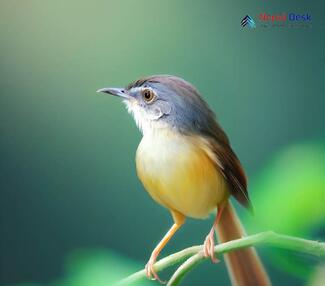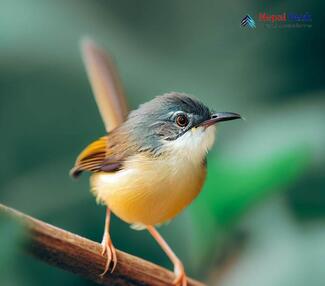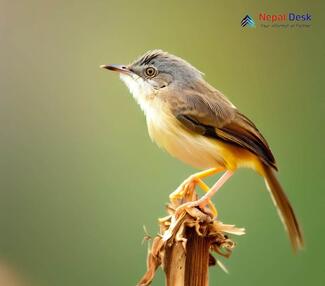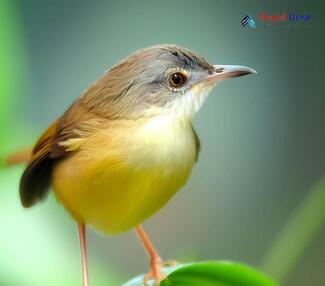The charming yellow-bellied prinia (Prinia flaviventris) is a small passerine bird primarily found in Asia, famous for its colorful plumage and captivating song. In this article, we'll dive into the details of the yellow-bellied prinia's taxonomy and appearance, learn about its habitat and diet choices, delve into its breeding and nesting behavior, and uncover its place within the beautiful landscape of Nepal.
Understanding Taxonomy and Appearance
As part of the Cisticolidae family, yellow-bellied prinias are related to around 160 species of small insect-eating birds. Their genus, Prinia, includes birds with slender bodies, rounded wings, and long tails. Their trademark feature is their striking yellow belly, coupled with olive-green or brownish-grey upperparts. The prinias use their short bill to deftly capture insects. Adult birds usually grow to 10-13 centimeters in length and have a weight range of 6-10 grams.
Exploring Habitat and Diet
Native to South Asia's tall grasslands, reed beds, farmland, and marshes, yellow-bellied prinias can be seen perching on high grass stalks or bushes while searching for food. Their primary dietary preference consists of insects like beetles, caterpillars, ants, aphids, and dragonflies. However; they might also munch on tiny seeds when insects are scarce.
Discovering Breeding and Nesting Practices
These monogamous birds form pairs during their breeding season—typically from April to September. Males skillfully attract females by singing melodious songs from conspicuous perches. The yellow-bellied prinia exhibits remarkable nest-building abilities; they use grass leaves and plant fibers to construct a sturdy, deep-cupped nest that hangs from tall grass stems.
Females lay two to six pale-colored eggs adorned with brown or purple markings. Both parents share incubation responsibilities, which last for about 12-16 days. Once hatched, the chicks are fed insects by both parents until they're ready to leave the nest around 11-13 days later.
Spotlight on Nepal
In Nepal, you'll frequently find the yellow-bellied prinia in the southern Terai region, where vast wetlands and grasslands offer ideal habitats. Birdwatchers can delight in observing them at Chitwan National Park and Bardia National Park. Their widespread presence across Southeast Asia and their adaptable nature earn them a classification as "Least Concern" on the IUCN Red List.
The yellow-bellied prinia contributes significantly to local ecosystems by controlling pests while simultaneously enchanting those who appreciate nature's beauty. As humans continue to encroach upon natural habitats, it is vital to safeguard these crucial spaces to protect captivating species like the yellow-bellied prinia.




